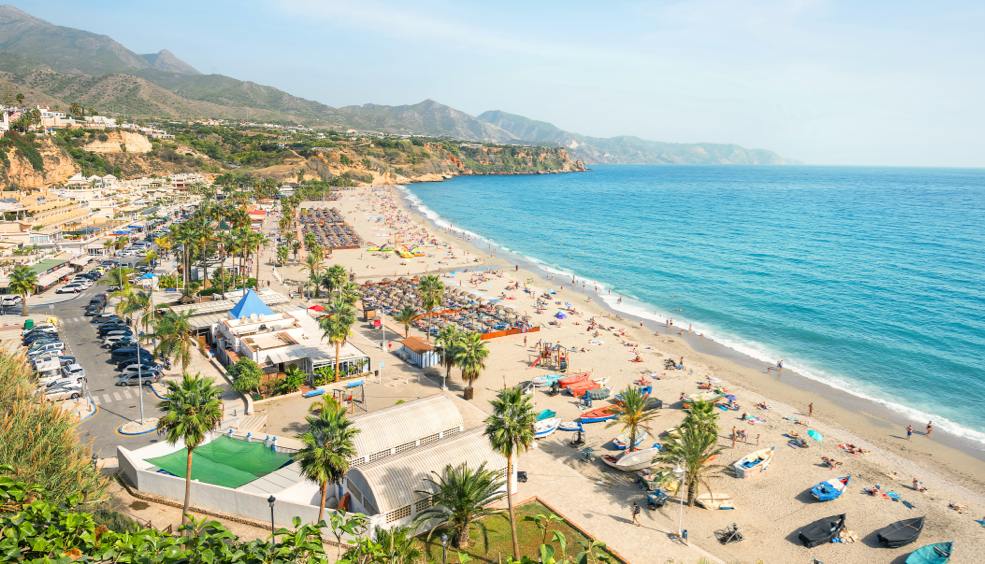5 deliciosos 5 delicious moments in Asturiasen Asturias
Copious meals at Picos de Europa
It’s not a secret that Picos de Europa is a great place to eat. Only in the area of Cabrales, over 40 types of cheese are prepared, being the region in Europe with a greater variety.
It was clear that, before we feast on great food, we needed to make some kind of effort, first. The most common route to follow in the area is at Cares, uphill at the beginning but nice and relaxed the rest of the way. Is almost like a baptism to trekking, much frequented on the weekends.
We opt to follow the route from Poncebos to Bulnes, an uphill and amusing where we meet mountain goats several times. Bulnes is a small village, the only place in Asturias that is not accessible by car. There are many houses here but most of them are bars, inns and restaurants where you can eat very well. We tried delicious fabes and other specialties from the province, like a pot of octopus and potatoes, the small chorizos with cider and the scorpion fish cake.
Trying the best fabada in the world (and a great cachopo)
By chance, right next to the hotel where we were staying in Villaviciosa there is Bedriñana cider bar, which was awarded in 2014 for the ‘best fabada in the world’. That is something very remarkable in Asturias!
The fabada, obviously, was delicious and, to top it off, as a second course we ordered a cachopo to share. Cachopo (or cachopu) is a very typical dish from Asturian cuisine, only suitable to resistant stomachs. It is made of two veal filets that can be filled with cheese, ham or other ingredients. Furthermore, wine plus a side dish of potatoes, pepper and mushrooms. The two of us couldn’t even finish the half of the dish.
Then is when we realised that you have to be very careful when you order a dish. If an Asturian waiter tells you that you’re not ordering enough, be prepared. A big feeding feast is awaiting you.
For the great seafood, go to Tazones
Close to Villaviciosa, Tazones has the essence of a fishermen town, with pretty cobblestone streets and low-lying houses with colourful balconies, and is the place to go to eat great seafood and fish. The choices and quality are immense, any of the restaurants in town is provided by local fisheries.
Delicious cocktails in Gijón
We took advantage of a quick visit to Gijón to try some cocktails at one of the most frequented places in town. Its name is Varsovia and can be located by San Lorenzo avenue, exactly at Cabrales, 18, in an iconic historical building with an interior of eclectic decoration and a great variety of furniture, from Chester sofas to old wooden furniture. The large windows provide the best views over Gijón beach.
The menu includes a great variety of cocktails, provided in an unbeatable atmosphere and with a great music selection to enjoy.
The cider: customs & practices
A different matter is cider, the Asturian drink by excellence, and how it must be served. Cider in Asturias usually costs no more than 3€ each bottle, with a dark green colour and usually purchased to be shared. It has low alcohol content so you can order many and still remain not too much drunk.
The technique to pour cider usually leads to funny moments, especially among beginners who waste more cider than what is served. It is necessary to pour the cider right in the border of the glass, to enhance the flavour and smell when it mixes with the oxygen from the glass. When the cider is served you should ask ¿quién bebe? (“who drinks?”) and the glass must be empty in one sip or two, not more. It can be considered impolite to keep the cider for too long in the glass, because it loses the properties.
If you are not good at pouring cider, you better ask the waiter to serve you a “culín” or “culete”. If you dare to pour it yourself, you should know that the stream should be as high as possible and break right at the border of the glass. You don’t want to shower the rest of the diners.
Why not take a trip to Asturias? Have a look at our flights here!
more infoNew routes from London to Spain with Vueling
Gatwick Airport now has direct flights to Malaga (Costa del Sol, Andalusia), Seville (Andalusia), Granada (Andalusia), Almería (Andalusia), Cádiz (Jerez, Andalusia), Menorca (Balearic Islands), Oviedo (Asturias) and A Coruña (Galicia).
more info3 COOL DESTINATIONS IN SPAIN TO GET AWAY FROM THE SUMMER HEAT
If you are desperate to get away from the sweltering heat, take a look at these destinations and get ready to use a blanket at night.
more infoThe best national parks in Europe
Europe is home to a constellation of spectacular national parks, some of them UNESCO world heritage sites. Grab your boots, we're leaving!
more info




